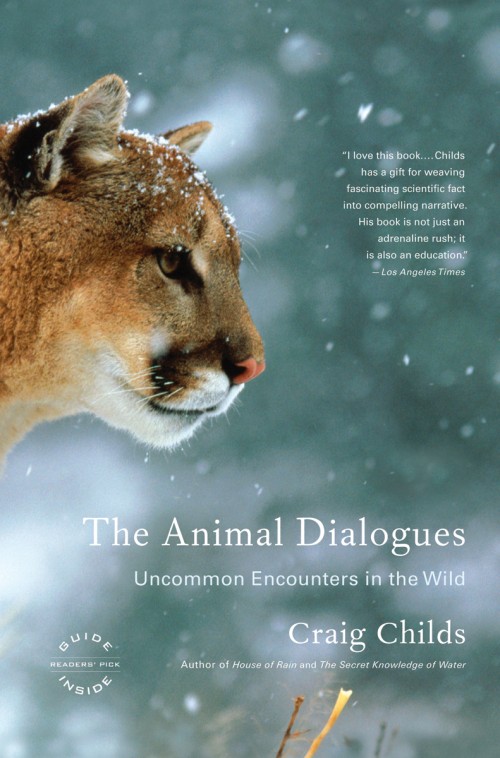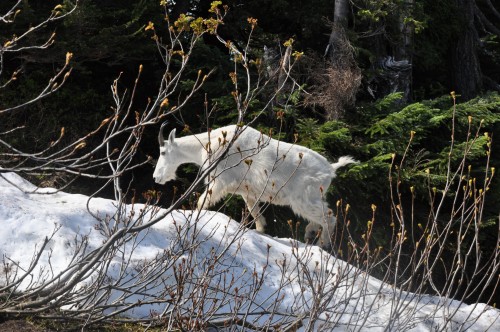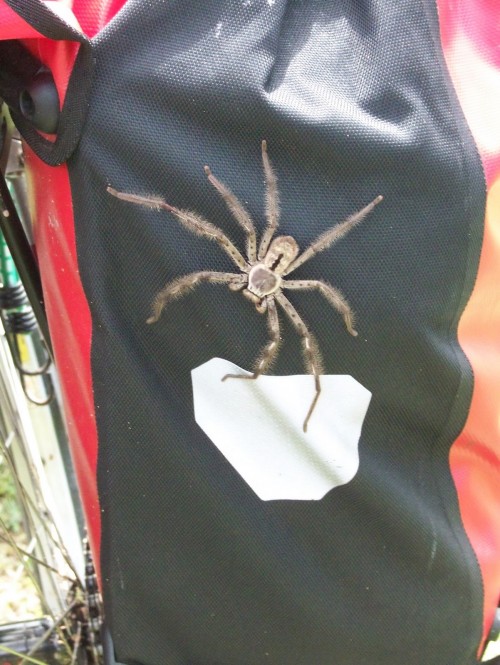The Animal Dialogues: A Natural History Book Reflection

In 2010, I completed a year-long bicycle tour through many countries famous for their exotic creepy crawlies and, while reading Craig Childs’ book The Animal Dialogues, I couldn’t help reflecting on the experiences I had with some of those creatures throughout that tour. The Animal Dialogues presents an exploration of the author’s uncommon encounters with animals, reptiles, and insects. Childs’ writing style is a blend of naturalist observations and beautifully depicted narratives indicative of a well-seasoned nature writer. He is able to find pause in that moment between life and death and break down the human-animal barrier, capturing in writing the infinite space between one moment and the next.
One such moment was depicted in a chapter on mountain lions where Childs recalls many nearly unbelievable stories. After a recent cougar encounter in Diablo, followed by numerous cougar sightings around the Environmental Learning Center, I found myself paying close attention to how Childs describes his encounters with cougars in the wild. One particular story that Childs writes about centers around a run-in with a cougar near a water source in the Arizona desert. After the mountain lion backs down from the stand-off with Childs, he writes, “I stand there for a few minutes, staring at the forest. […] I have reached the hard, palpable seed of life. The image is now permanently formed in my mind. I can see how the mountain lion will be posed, suddenly in view anywhere around me, its tail weaving an intricate pattern, spelling secret words in the air (66).” We all have moments in life where time seems to stand still and we are truly living moment by moment. Although for most of us this stand still will never occur between man and cougar, what Childs conjures in this chapter and throughout his book is the way in which our primal connection with the earth is realized when we interact with deep wilderness. Whether it’s a cougar in my own neighborhood, a mountain goat on Cascade Pass, or some other surprising encounter, these experiences come in a myriad of forms.
 The mountain goat I spotted while hiking over Cascade Pass in early August 2011.
The mountain goat I spotted while hiking over Cascade Pass in early August 2011.
The olfactory experience, less distinguishable and often set aside, also brings forth a deep connection to the earth and to personal experiences as well. I’m confident I could still pick out of a lineup that distinct smell of moss recalled from my early childhood home on Lopez Island – sweet, damp, and earthy as it wafts up from the forest floor. My physical and visual connection to place is rooted in my sense of smell, and it is interesting to me that a scent can elicit specific memories. In another chapter on mountain goats, Childs describes his exploration of the alpine zone using his sense of smell. The author writes, “Imagine reading a book with your nose. Having a conversation without a voice or without eye contact. We are far more packed with neural receptors for smell than for color, vision or for taste, with the physical capability to sort through ten thousand scents at once (159).” Childs tracks mountain goats using his sense of smell – a skill to be honed and prioritized. Hiking over Cascade Pass last summer I remember seeing tufts of mountain goat hair hung like ornaments on a shrub, spurring me to look up towards the peaks in search of the source. A lone mountain goat turned its head towards me, a mythical creature of inquisitive finery. The Animal Dialogues reminds me to stop and smell, to experience the natural world through the secret nuances offered up by my senses.
 A wolf spider as it climbs out of my touring bag! Yikes!
A wolf spider as it climbs out of my touring bag! Yikes!
The majority of Childs’ uncommon encounters with animals come while deep in wilderness. However, I believe these unique encounters can occur all around us – in urban, rural, and wild places. While I was traveling by bicycle, I recall some of my most meaningful interactions with wildlife occurring in the wild-urban jungle: a face-to-face meeting with a wolf spider the size of my hand as it crawled out of my bicycle touring bag, or cycling quietly by a group of grazing football-sized red-back kangaroos. Regardless of the terrain through which I travel, or the places I choose to call home, Childs’ book adventurously reminds me to stop and experience life through all my senses.


Thanks Elise. My encounter with a Cougar near Diablo deeply influenced my appreciation and admiration for this amazing creature. Reading your story reminded me of its deep green eyes and curious gaze. Thank you.
Thanks for the info and reflections, Elise. I agree that we all benefit from all the interactions we have with nature and animals, regardless of where we find them or they find us. Thanks.
Great article. Thanks Elise. I really like that “hard, palpable seed of life” quote. To me, cougars are the essence of wilderness and imagination – real, individual animals, traveling widely through incredible landscapes, with both biological and spiritual meaning.